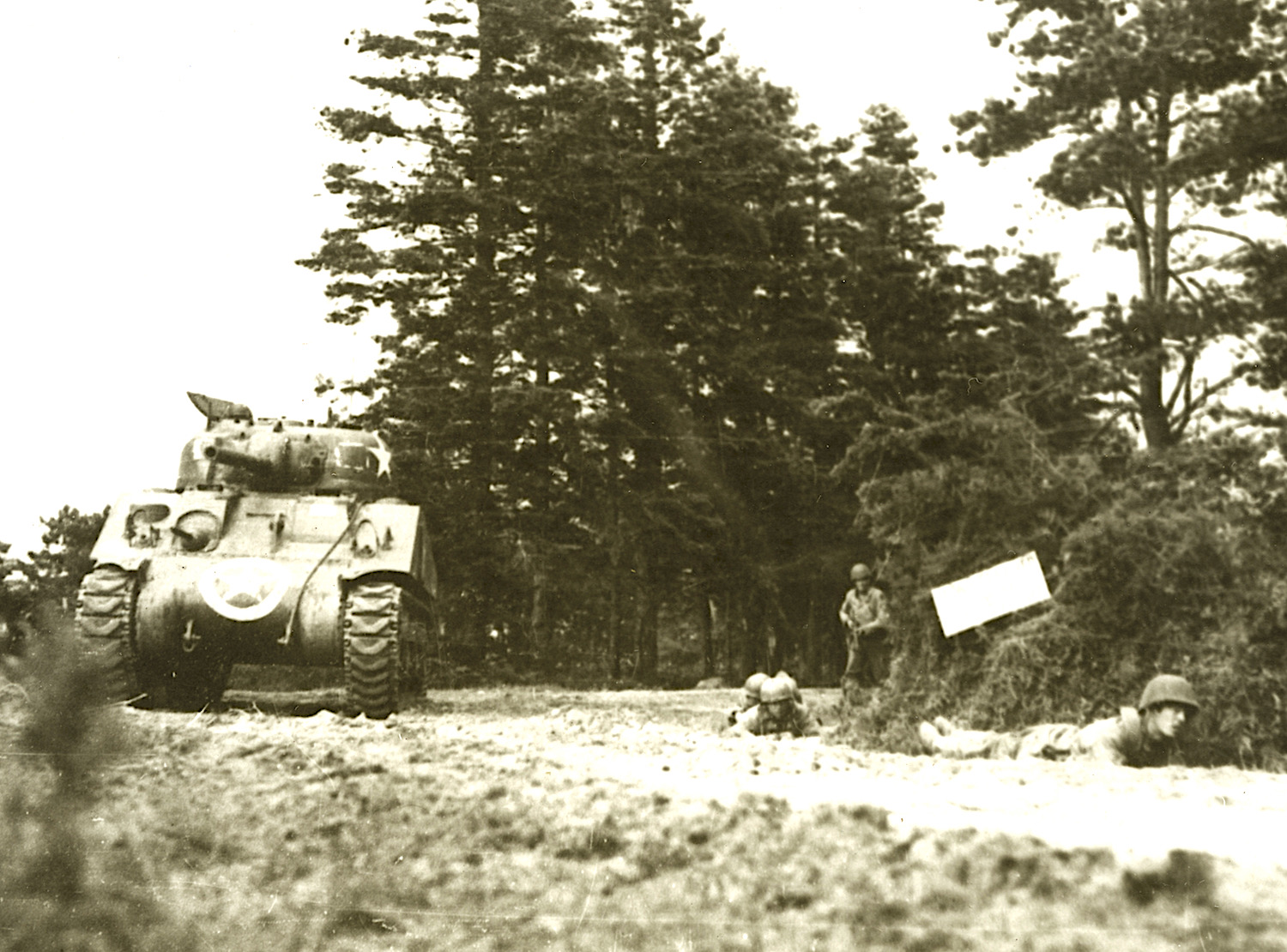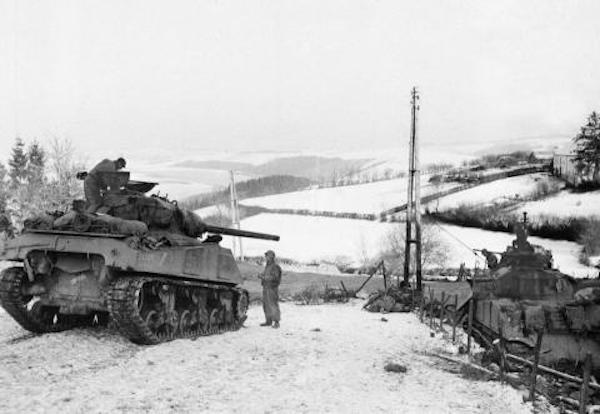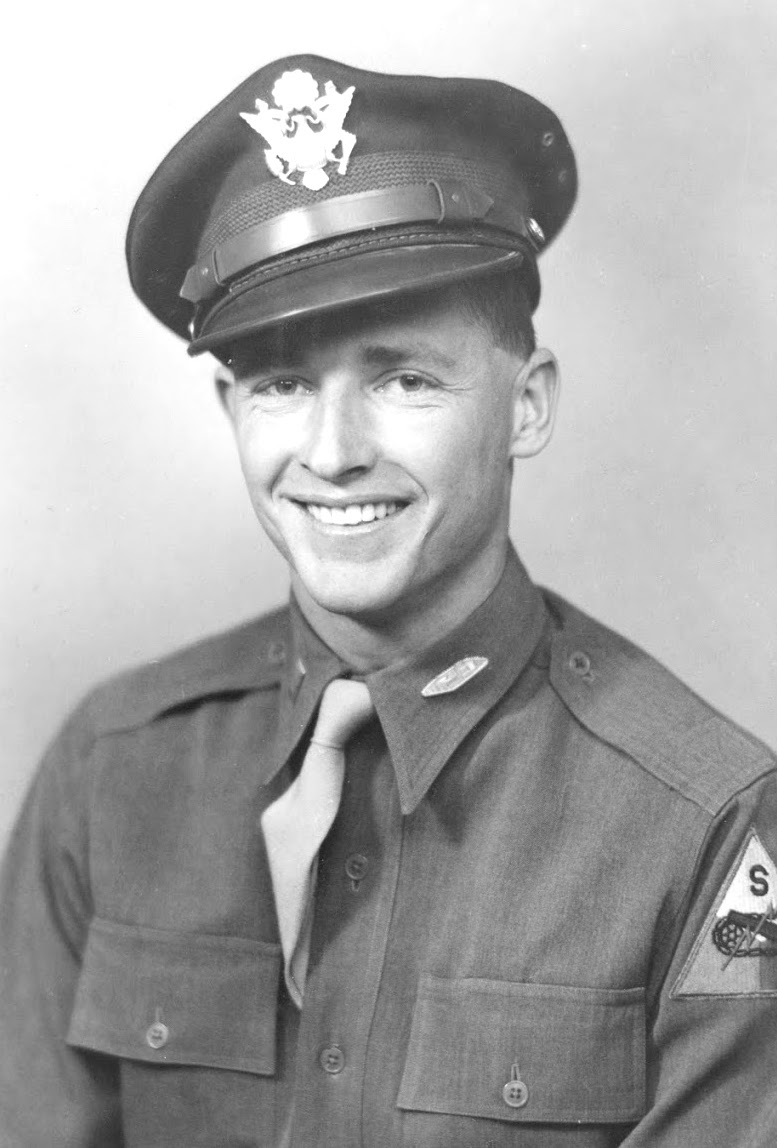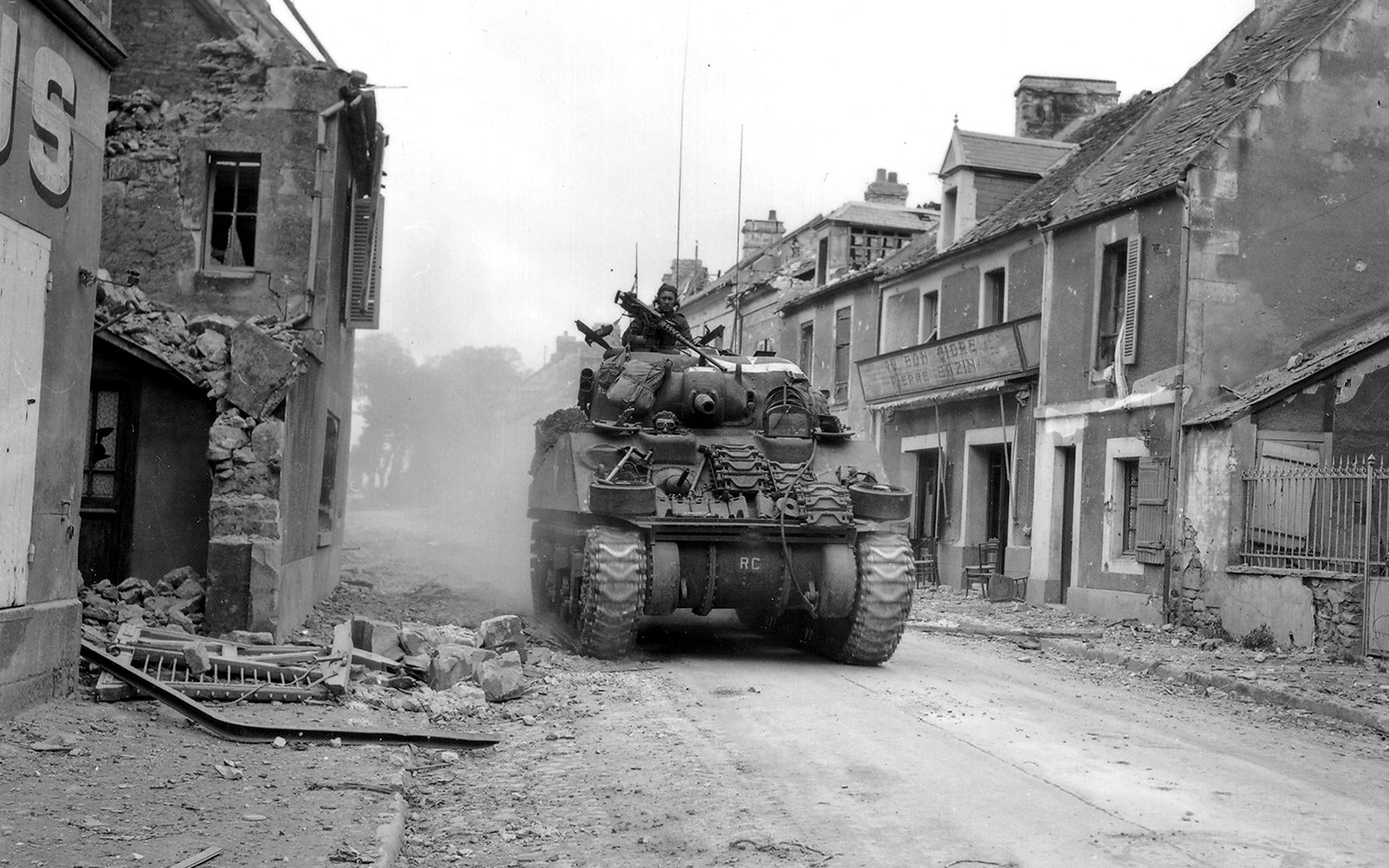The days and months of the last two years of World War II seemed like an eternity to the millions of men and women serving in the United States military.
Long hours and endless days also wore on the units and equipment, especially in Europe as Allies began pushing their way into France after the D-Day landing in June 1944 and finally into Germany six months later.
Ralph William (Bill) Lattin, who was born in Fallon in 1920 and died a century later on Sept. 20. spent the final year of the war in a tank company traversing France, then through Belgium fighting at the Battle of the Bulge and finally to Germany when the Instrument of Surrender was signed during the early evening hours of May 8, 1945. Before the German officers from the high command and the Allies signed the surrender, Lattin’s unit had liberated one of the smaller concentration camps.
Lattin, who received his degree in English and a minor in economics and a U.S. Army commission as an infantry second lieutenant from the University of Nevada in 1942, left for Fort Douglas, an installation built in 1862 on the east benches that overlook Salt Lake City. After Lattin arrived at the Army post, he encountered the frustrations of reporting to active duty.
“They didn't have a room left on Fort Douglas anywhere, so they quartered me in a hotel downtown in Salt Lake City,” said Lattin, not remembering the name of the hotel. “They quartered me there, and I hung around for a day or two not doing anything.”
The command, though, found something for Lattin to do: He supervised soldiers who were required to enter the tear gas chamber and feel the effects of the gassing.
 Signal Corps photo
Signal Corps photo
American troops advance in France in 1944.
“You had to have an officer in attendance any time anybody went through the tear gas chamber or — what do they call those courses that they put you through, and they shoot over your head and all that kind of stuff? Anyway, whenever they put a group through, the rule they had there was that you had to have an officer with you, so I got to escort people through that tear gas chamber and through that other deal.”
While at Fort Douglas for some strange reason, he shipped off to Fort Knox near Louisville, Kentucky, where he was assigned to an armored command and to a 13-week course. Lattin remembered all the infantry and artillery officers being whipped into shape to become good armor officers with a future assignment in tanks. He had also married Edna Brite, whom he met as a junior when he came back to Fallon to visit.
“So, I got to go through that,” Lattin said of the training that then led to an assignment to the 5th Armored Division.
“And I went all through the Mojave Desert all one summer on desert maneuvers,” Lattin pointed out, adding he eventually returned to Fort Knox for more training.
Edna left Fort Knox and lived in Palm Springs, Calif., which was near Bill’s training. When he returned to Kentucky, she did as well. Lattin also trained at Camp Campbell, which straddles the Kentucky-Tennessee state line, but before he left for maneuvers, Edna returned to Fallon to wait for her husband.
Two years had passed since Lattin, a championship collegiate wrestler and boxer, received his diploma and completed weeks of training in the Mojave Desert and at Fort Knox. The soldiers received their orders to ship off to Europe only to learn of their mission once they arrived in early July 1944. Almost one month before Lattin’s division arrived off the coast of France, the largest amphibious invasion in military history on June 6 began to recapture most of the European continent from Hitler’s control. Operation Overlord involved five Normandy beaches, and the allies launched a massive drive to put the German troops on the defensive with troops storming across France and eventually into Germany. The invasion on June 6 was immense with 56,115 U.S., British and Canadian troops, 6,939 ships and landing vessels, and 2,395 aircraft and 867 gliders involved in the operation.
Lattin’s unit along with others, though, did not land on a beach during Operation Overload. On D-Day plus 29, almost a month after the invasion, his tank company landed on a sandy beach. According to Lattin, the paratroopers and infantry who landed on June 6 and began their drive into northern France, had advanced miles toward Paris. As a tank company commander, though, he recalled the other tanks couldn’t land on the beach immediately. At one time in his career, he served in logistics.
“So I landed among the first of the ones where they could form a complement of tanks on the beach, and then went up through Chartres (France) and Saint-Lô (once a German stronghold),” Lattin said. “The fighting was finished at Saint-Lô, but that was the trail we took, and then we got engaged up somewhere up by the side of Saint-Lô, Chartres, somewhere in there. I can't remember. Then I was with that separate tank company until … oh, I can't remember exactly. I'd have to go back and look, but the 10th Armored Division, I think, hit France in October, and the first time they got engaged, they got some real heavy casualties. So they broke up a bunch of these other outfits and used them in the various divisions as replacements, and I went to the 10th Armored (Division), 11th Tank Battalion.”
 AP Photo pool photo 1945
AP Photo pool photo 1945
American tank destroyers wait on the snowy slopes of the Bastogne area on Jan. 6, 1945 in Bastogne, Belgium, ready to advance toward German lines as soon as the word is given. As they wait Gen. Patton's men slowly forge ahead into the German salient.
Lattin said he spent the rest of the war with the 10th Armored, 11th Tank Battalion that came under the Third U.S. Army umbrella commanded by Gen. George Patton. Later, Lattin’s unit transferred near the end of the war to the Twelfth U.S. Army commanded by Gen. William Morris, Jr. Lattin, though, thought it was strange the Germans gave the 10th Armored an unique name, the “Ghost Division.” He said the unit possessed the uncanny ability of turning up at different places, probably at times when the Germans least expected it. From August, the Siegfried Line campaign consisting of hundreds of thousands of allied troops from seven countries, began a final assault on the Germans by rumbling through the Ardennes (Battle of the Bulge), to the Alsace-Lorraine region of northwest France and finally crossing into Germany’s Rhine area during the early months of 1945.
“Yes, we fought in the Battle of the Bulge,” Lattin recounted. “I can't remember exactly, but it seemed like the outfit that I was with which was at that time, Combat Command A, I think we were in — can't remember for sure the name of that town — but, anyway, the call got out, and we had to get moving.
Some of the outfits in the 10th before that engagement moved over a hundred miles in one night to get to where the action was which was down in the Bulge.
“Our Combat Command B wound up with one task force in Bastogne where it stayed until the end of that Battle of the Bulge, and the rest of the outfit was scattered around various places within miles of Bastogne. So, depending on which task force you were with was where you were. We moved better than a hundred miles to get into that thing, and we'd done that several times when they needed an armored division somewhere.”
Lattin, who received two Purple Heart medals and later two Bronze Stars for being hit by enemy fire before and after the Battle of the Bulge, spent time in a field hospital on two different occasions.
“For one time I was there for almost a week, and one time I was there just a couple of days, but it seemed like during periods when we weren't actually under direct fire — and that's the nomenclature we use — you're either under direct fire or you're not. You may be in reserve and you may be subject to indirect fire, but no direct fire,” Lattin said. “But when we were not under direct fire, we were either patching up equipment or trying to get new crews into the tanks, replacements. We had real heavy casualties, and we were just continually trying to get replacements trained so that they could function and keep our equipment going.”
Conditions were harsh at the Ardennes with temperatures hovering above zero and snow reaching a foot or more. The Americans had, at its highest peak, more than 610,000 troops involved with the fighting, but the U.S. suffered 89,000 casualties that included 19,000 killed. The Battle of the Bulge became the largest as well as the bloodiest single battle fought by the Americans in World War II — including the Pacific Theater — and the third deadliest campaign in the country’s history.
When Germany surrendered, Lattin couldn’t remember if he was in Fusen or Slangow. Although there wasn’t a celebration at the time, one did occur weeks later at the division headquarters at Garmisch Parkenkirken. Lattin, though, said the troops had been expecting a surrender. After the ceasefire, Lattin stayed in the area about three to four weeks, and then the division arrived to take over. His command assigned him to oversee the operations of several counties.
 Courtesy Churchill County Museum.
Courtesy Churchill County Museum.
Ralph William Lattin of Fallon received his commission in 1942.
Lattin’s unit left Germany during the fall and arrived in the United States, coincidentally on Nov. 11 or Veterans Day.
“We came into New York,” Lattin described. “I came back on the Queen Mary. When I went over, I went over on the Isle de France, landed in Glasgow, Scotland, and then down through Scotland into England and then across the Channel that way and then came back on the Queen Mary.”
From New York City, Lattin took the train to Salt Lake City where he was discharged at Fort Douglas. He hopped on another train for the 12-hour trip across the Great Basin to Fallon, anxious to greet his family and Edna, whom he hadn’t seen since leaving Fort Knox.
Lattin and his brother Richard took over his father’s farm after he returned and also completed a 20-year career in the Nevada State Prison System where he eventually became superintendent. His legacy was handed down to the next generation where his son Rik currently operates the farm.
In looking back at the end of the war in 1945, Lattin had some thoughts when his unit was in Germany. Lattin and his comrades also liberated a concentration camp — albeit one of the lesser known operations — and the experience left him horrified.
“I was horrified. No question about that. I think it's so interesting now that people are saying that there wasn't any such thing as a concentration camp, wasn't anything such thing as the ovens and that sort of thing. I know different,” he said, adding he saw the Jews wearing their striped prison garb whose appearance shocked Lattin. “Well, you just feel like, you know, I don't know what to say. You feel terrible. You feel terrible about any of that that it has to happen.”
Editor’s note: The end of World War II in both Europe and the Pacific occurred 76 years ago beginning with Victory Europe Day in May, followed by the Japanese unconditional surrender in August and the Instrument of Surrender on Sept. 2, 1945. The Lahontan Valley News and Nevada Appeal continue to feature articles on our veterans who served during World War II.
MORE INFO
This article includes information from Ralph William Lattin’s interview, which is part of the collection of oral history interviews done by Churchill County Museum volunteers in the 1990s. The interview was conducted on June 6, 1996. Currently, the museum has 129 interviews. For information visit the museum’s website at
www.ccmuseum.org or call 775-423-3677.
 usarmy.mil
usarmy.mil
The 10th Armored Division was activated on July 15, 1942, at Fort Benning, Ga. They went straight to the European continent. The Tiger division as the 10th was known was led by Maj. Gen. William H. H. Morris, Jr.
 Signal Corps photo
Signal Corps photo AP Photo pool photo 1945
AP Photo pool photo 1945 Courtesy Churchill County Museum.
Courtesy Churchill County Museum. usarmy.mil
usarmy.mil